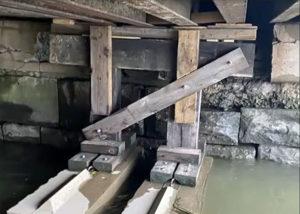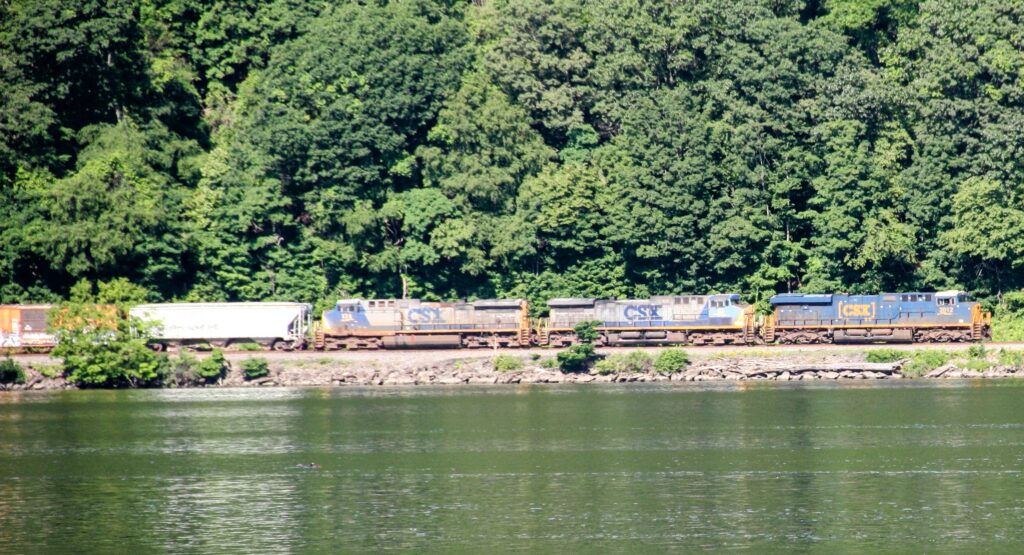
JACKSONVILLE, FL – CSX, one of the nation’s largest railroad companies, announced plans for additional safety measures on Tuesday in response to renewed calls for added safety. Several major derailments, including the Norfolk Southern train in East Palestine, Ohio in which 20 rail cars were carrying hazardous materials, including highly flammable vinyl chloride, are adding to the calls for more safety.
On February 14, 2023, A CSX train derailed in Enoree, South Carolina, with no injuries or threats to the environment.
On Tuesday, US Senate Majority Leader Charles Schumer called on the major railroad companies to provide evidence of what they are doing to prevent future catastrophes such as that one, including CSX. “I asked them to meet with me sort of quickly so that is encouraging. We will see what happens. With these railroads, you never know. Sometimes they answer and then they don’t, but I stay on them very hard,” he told Mid-Hudson News.
“CSX understands that safety is the foundation of our business, which depends upon our ability to work collaboratively as a ONE CSX team to deliver customers’ freight safely, reliably, and sustainably,” said Joe Hinrichs, president and chief executive officer. “Everything we do at our company is centered around our recognition that the safety of our employees and the communities where we operate is paramount.”
The railroad is considered the leader among Class I railroads with the fewest train accidents and the lowest average rate of Federal Railroad Administration injuries since 2019.
CSX safety initiatives highlighted on Tuesday:
- CSX has increased its annual investment on core infrastructure and will spend $1.7 billion out of a total $2.3 billion capital budget on track, bridge, and signal projects in 2023. Over the five-year period from 2017 through 2021, the company spent $500 million more on core infrastructure than in the previous five-year period and has continued to increase spending each year.
- CSX has already updated several hot-bearing detectors (HBDs) across its rail network with connectivity to facilitate remote monitoring. In the past three years, CSX has been updating the HBDs to second-generation technology that is more effective in detecting overheated rail car wheel bearings, and consistently inspects the units every two weeks to ensure optimal performance. The HBDs are deployed every 15.1 miles along key routes and 16.2 miles along all CSX routes. The company is proactively preparing to install 53 additional detectors over the course of 2023, extending coverage to ensure that HBDs are in place every 14.3 miles along its key routes and 14.9 miles along all CSX routes.
- CSX has been updating its acoustic bearing detectors (ABDs) over the past several years to second-generation technology to assist with safety inspections. The railroad currently has nine units in place and is in the process of installing 12 additional ABDs, which analyze the acoustic signature inside the bearing to help identify potential issues.
- CSX has installed three automated train inspection portals (TIPs) on high-volume main lines to perform 360-degree inspections on moving trains using high-resolution imaging technology and advanced image analysis. TIPs are able to detect defects as the train is in motion.
- CSX uses autonomous track assessment cars (ATACs) to gather critical data on track conditions and send the data in near real-time for assessment and, if necessary, expedited track repair. ATACs are constantly traveling in trains across the entire network.
- CSX has an extensive drone safety program that uses unmanned aerial vehicles to perform a wide range of tasks, including aerial mapping of yards, facility inspection, storm response, accident investigation and law enforcement.








